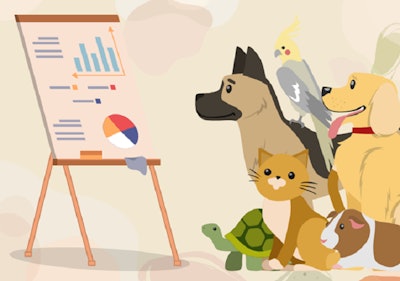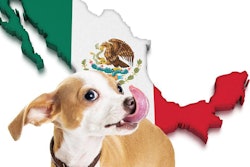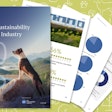
Pet food value sales in Europe increased 3.1% in 2021, reaching 27.7 billion Euros (US$28.89 billion), according to data recently released by FEDIAF, the European pet food association. Related services and products accounted for another 23.5 billion Euros (US$24.5 billion) in value sales, while pet food volume sales totaled at 10.2 million tons. Both amounts represented increases over 2020 data.
While the number of pet food companies and manufacturing plants—150 and an estimated 200, respectively—remained the same from 2020 to 2021, the European pet food industry grew its number of direct employees by 10%, FEDIAF said. Direct employment by the industry numbered 110,000 people in 2021, compared to 100,000 in 2020, while indirect employment totaled 950,000 in 2021, versus 900,000 in 2020.
Pet populations, ownership also increased
As of the end of 2021, 46% of European households owned pets, the FEDIAF data showed. That equates to 90 million households. Both numbers outpaced those of 2020, when 88 million households owned pets, representing 38% of all households in Europe.
Cats and dogs remained the most popular pets; 25% of households in the European Union (EU) own at least one cat or one dog, while in Europe overall, 26% own at least one cat and 25%, at least one dog.
Unlike other pet food markets, such as the U.S., where dogs are more numerous, cats reign supreme in the EU and Europe, with a total of 113.5 million cats in Europe overall compared to 92.9 million dogs. Countries such as France, Germany, Italy and Russia mainly account for the larger number of cats.
Among other species of pets, birds numbered 48.7 million in Europe, followed by small mammals at 29.3 million, fish at 16.4 million and reptiles at 11.4 million. The populations of pet birds and small mammals declined slightly compared to 2020, while fish and reptiles increased.

















